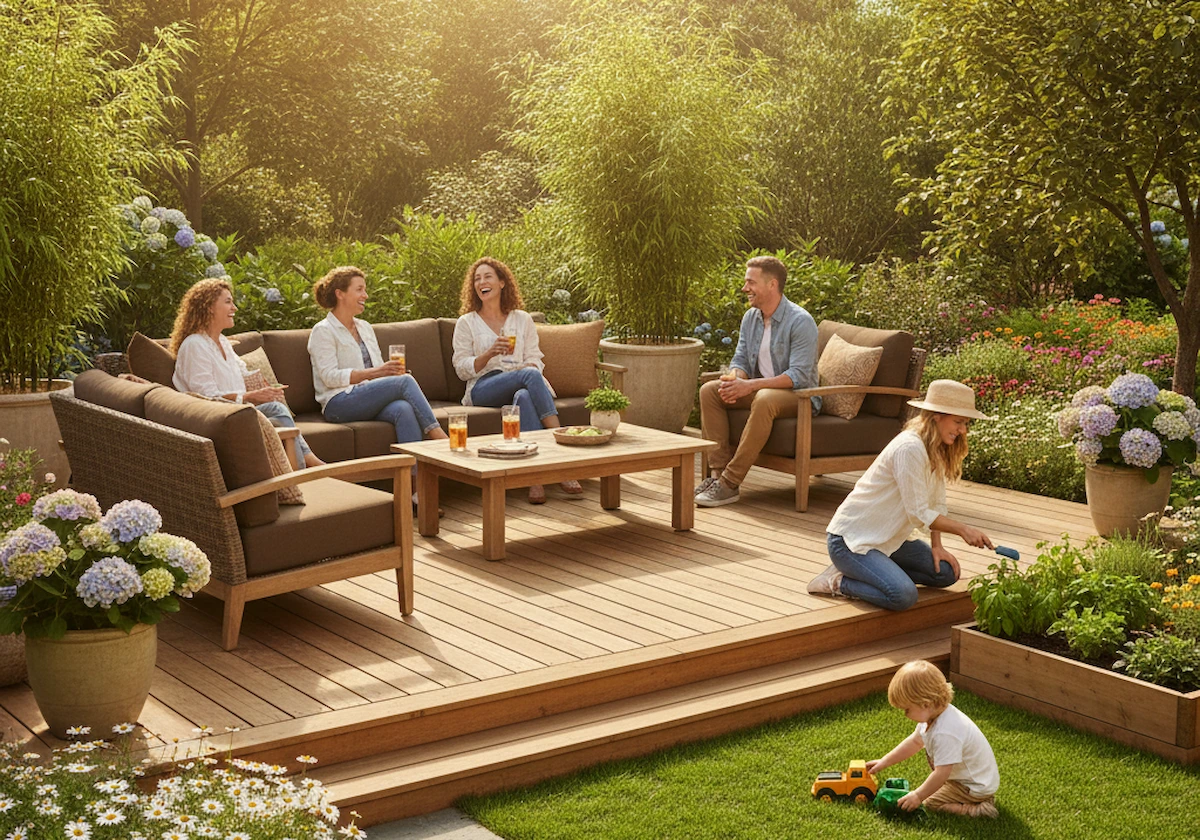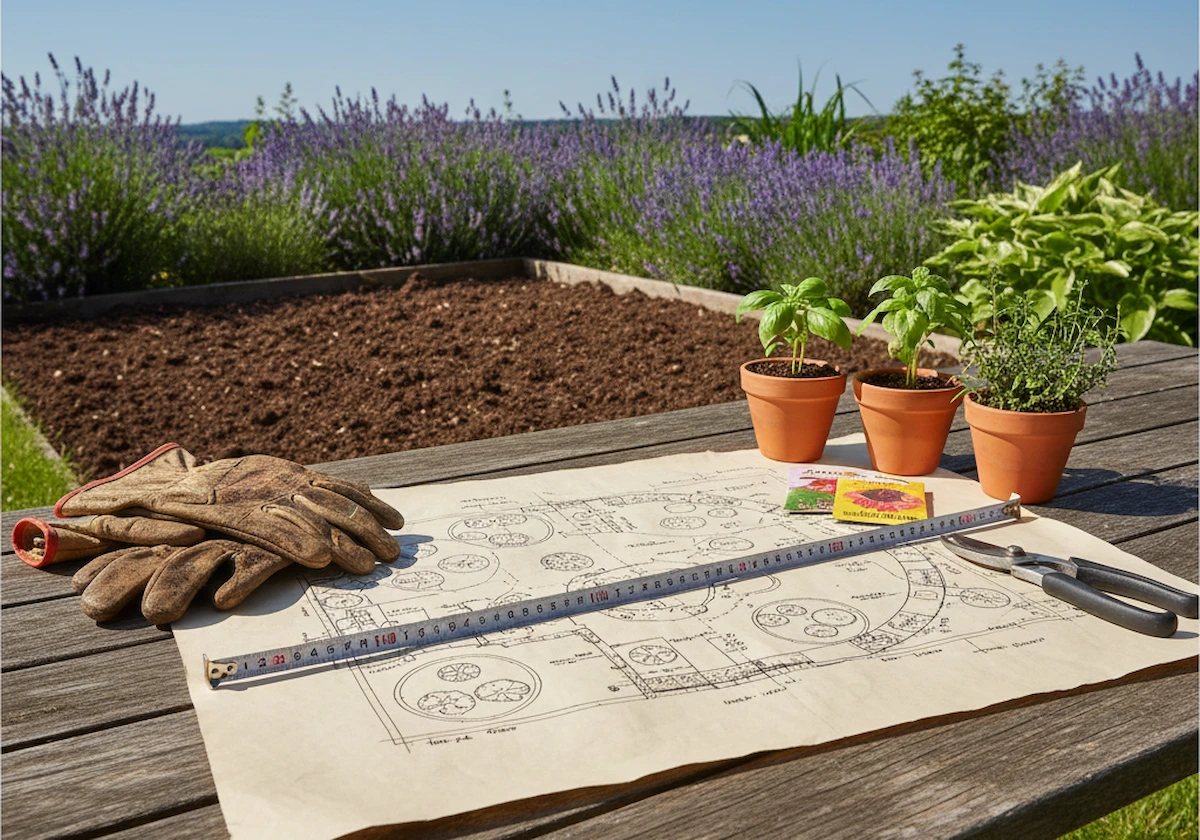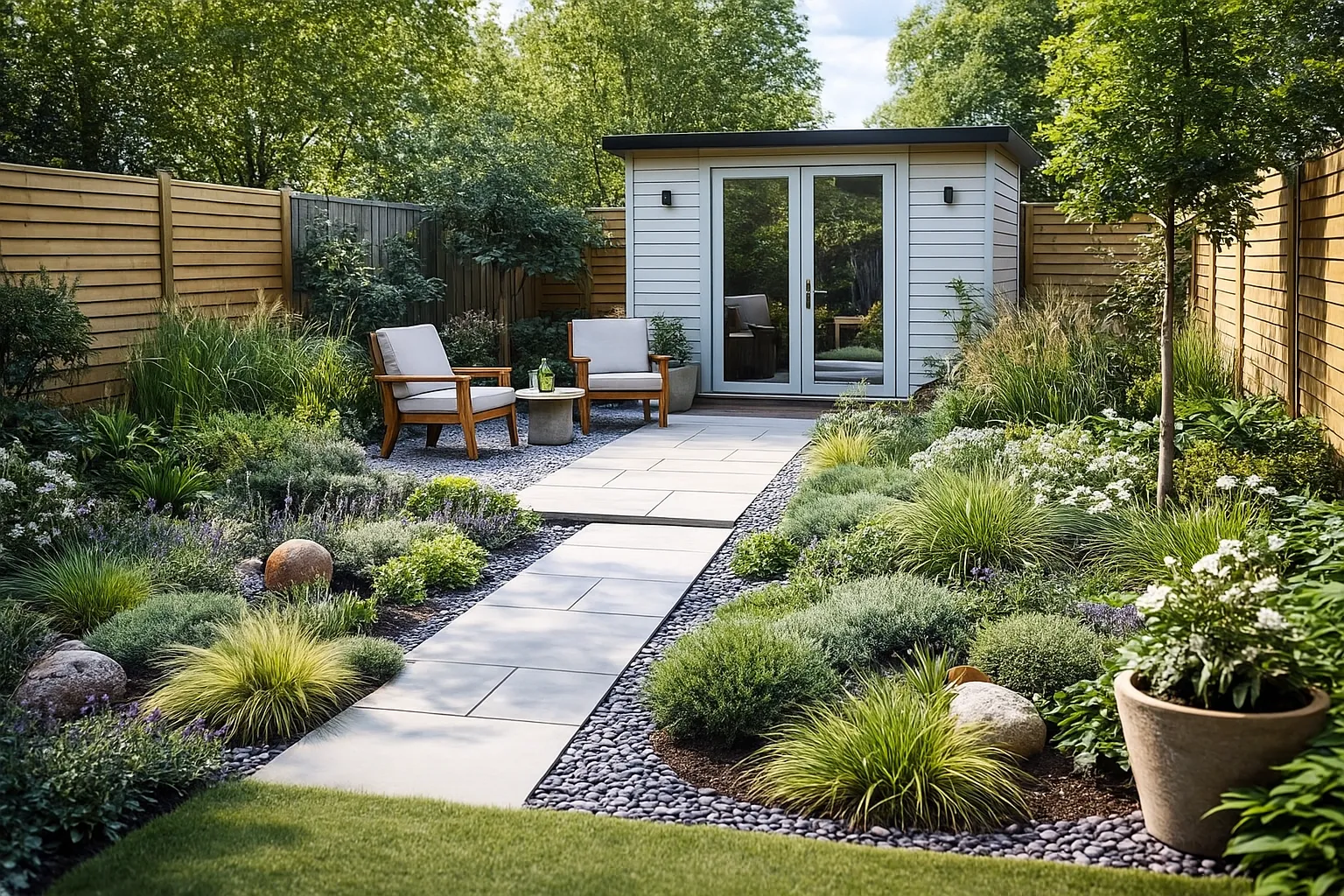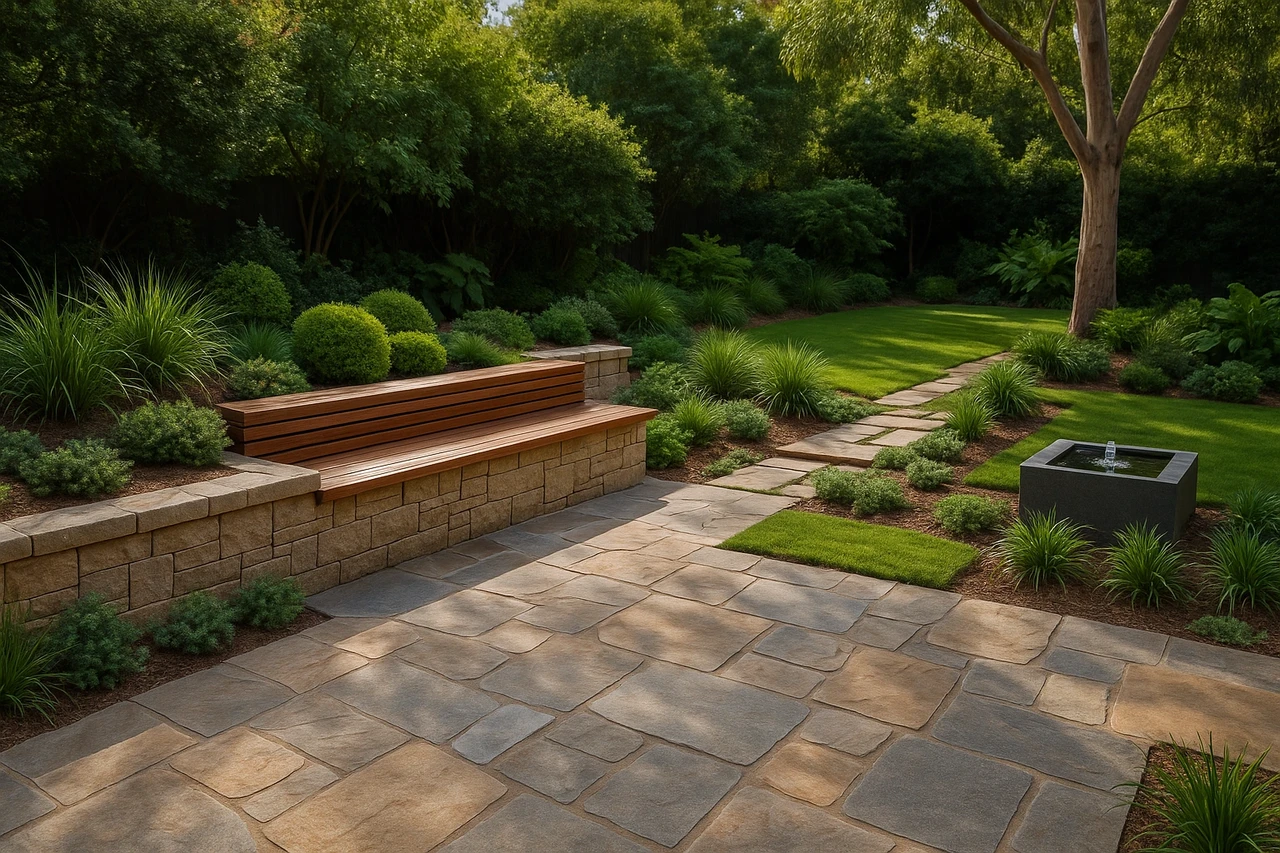Does your garden feel like it’s missing something? You’ve got the plants in place, the stone path laid, maybe even a bench under a tree. But why does it still look incomplete?
Now picture a soft trickle of water, a small pond catching the morning light, or birds dropping in for a drink. That’s what garden water features can do to complete your garden. They turn a simple patch of green into something peaceful and alive.
In this guide, we’ll walk you through different types of water features, how to choose one that suits your space, how to keep it low-stress, and how to make it fit in beautifully.
Ready? Let’s get started.
Why Water Features Matter in Garden Design
Water moves, reflects, and brings your garden space to life. If you do it right, a water feature completely transforms a garden. But how? Well, let’s take a further look at it.

Aesthetic Appeal
Garden water features work with all sorts of design styles. A clean-lined fountain fits a modern layout, but a rustic barrel feature adds character to a cottage garden. And a still pond with stepping stones brings calm to a zen-inspired space.
They’re flexible, but they always stand out.
Benefits to Wellbeing
There’s something instantly calming about moving water. It gives your brain a reason to slow down. The gentle sound drowns out traffic or barking dogs by creating a buffer between you and the outside world.
Think of it like soaking in a hot bath after a hectic day. Is it only the water that makes you feel better? No! It’s that feeling of release you get from it.
Wildlife and Ecosystem
Water features also make your garden more welcoming to wildlife. Birds stop by for a drink. Frogs and dragonflies help keep insect numbers down, while butterflies love the humidity near the surface.
You may feel good when you see these little visitors, but they serve a bigger purpose. They help pollinate plants and create a balanced, low-maintenance ecosystem.
If we want to express it in just one sentence, we can say that garden water features bring beauty, calm, and life into your space, all at once.
Types of Water Features and How to Choose the Right One
Every garden is different, and the right water feature should feel like it belongs there. Here’s a breakdown of popular types and how to decide which one fits your space and style.
Fountains: A fountain is a great way to add movement and sound without taking up too much room in your garden. And they come in a range of styles, from classic to modern.
Classic fountains are mostly suitable for cottage gardens, formal layouts, or traditional homes. They may cost between $150 to $2000 based on their size and materials. On the other hand, modern fountains are for minimalistic gardens, urban courtyards, or for homes with modern architecture. Depending on their size and materials, you may have to pay from $100 to over $1500.
Pros:
- Easy to install, especially pre-built models
- Work in both small and large gardens
- Water flow helps mask background noise
- Adds a peaceful, spa-like sound
Cons:
- Needs regular cleaning to avoid algae build-up
- Pumps can wear out over time
A fountain is best for creating a calm spot with minimal space.
Ponds: A pond can be a true centrepiece in your garden. It brings nature in, establishes a peaceful, reflective space, and creates a calming focal point that attracts frogs, birds, and insects. They are great for improving local biodiversity.
If you are tight on budget, you can get a DIY Pond Kit for $100 to $500. However, if you’d like to get your pond installed professionally, it will cost you from $1,500 to over $5,000 depending on the size and materials.
Pros:
- Natural or formal styles to suit your garden
- Supports fish, lilies, and other aquatic plants
- Attracts frogs, dragonflies, and birds
- Creates a more dynamic garden ecosystem
Cons:
- Can take several days or weeks to build
- Requires a balance of filtration and regular maintenance
Ponds are good for larger gardens or spaces where you want something that feels alive and evolving.
Waterfalls and Streams: These are flowing water features that mimic natural streams. For a layered effect, waterfalls and streams are often combined with ponds or rock landscaping in a garden. If you’ve got extra room and a bit of slope, these features can add sound and flow that pull everything together.
DIY Waterfall Kits will cost you around $400 to $1,200. But if you choose to go for custom-builds with landscaping, you may have to pay from $2,000 to more than $10,000.
Pros:
- Adds motion and soothing sound
- Great for blocking out street noise
- Makes the landscape feel more natural and flowing
Cons:
- Takes more effort and planning to install
- Not ideal for very small spaces
Waterfalls and streams go well with back gardens or sloped landscapes.
Birdbaths: As simple but effective options, birdbaths are perfect for small gardens or balconies. These are shallow basins that are placed on pedestals or mounted in gardens, offering a clean water source for birds. They attract wildlife without much work.
For basic ceramic or concrete birdbaths, you will have to pay between $30 and $150. But if you go for decorative or sculptural birdbaths, they will cost you around $150 to $400.
Pros:
- Super easy to set up
- Encourages birds to visit
- Low maintenance
Cons:
- Needs frequent water refills
- Doesn’t provide moving water or sound
You can use birdbaths for small spaces or patios that need a touch of life.
Pro Tip: Before choosing a garden water feature, think about your space and how much maintenance you’re comfortable with. A little planning goes a long way.
Designing Your Garden with Water Features
So you’ve picked the type of water feature that suits your space. Great. Now comes the fun part. How do you fit it into your garden in a way that looks like it was always meant to be there?

This is where style, placement, and a few clever details will make it stand out. Let’s find out about them here.
Integrating Water Features into Your Garden Style
A water feature should feel like it naturally belongs there. If your garden has a modern look, a sleek metal or concrete fountain will fit right in. But for rustic or cottage-style spaces, stone bowls or a reclaimed wine barrel with a spout will work well.
Zen gardens pair beautifully with still ponds or bamboo tricklers. And tropical gardens look attractive with overflowing urns and rich green trees all around.
Where you place your water feature matters as well. If you set it near a bench, it creates a relaxing mood. But if you put it along a winding path, it adds surprise and sound as you walk. And having a water feature right in the centre makes it a showstopper!
Flow and Placement Considerations
Water has movement, and that movement changes how your garden feels. The sound of a soft trickle relaxes the senses, while a stronger flow can help drown out traffic or noisy neighbours.
Placement also shapes the journey. A fountain at the end of a path draws you forward. On the other hand, a small stream invites you to adventure as it pulls your attention gently through the garden.
Surrounding Elements
What’s around your water feature can either make it pop or make it feel disconnected. So you need to be mindful when choosing the location of your water feature.
Our experts recommend using natural stone, gravel, or timber. These will help the feature settle into the space. But if you want to soften the edges, you can use low plants. However, if you want your water feature to glow at night and announce its presence to everyone, you can consider adding a spotlight or solar lantern to it.
That’s how garden water features go from being an extra touch to becoming the soul of your outdoor space!
Maintenance and Sustainability of Water Features
Once your water feature is in place and looking great, the next step is keeping it that way. A bit of regular care can make sure it stays clean, quiet, and running without problem. Let’s look at what that actually involves and how to keep things sustainable also.
Maintenance Challenges
A bit of regular attention goes a long way in keeping things clear, flowing, and algae-free. Most basic maintenance should be done every one to two weeks, depending on your setup.
Things to keep in mind:
- Cleaning: Remove leaves and debris from the water surface regularly. This prevents clogging and keeps the water fresh.
- Algae control: Use safe treatments or introduce aquatic plants to slow algae growth.
- Water levels: Check weekly, especially in hot weather. Low water can damage the pump.
- Filtration and pumps: A decent filtration system costs from $50 to $150. And pumps can range from $70 to over $300, depending on size and power.
- Materials: Choose durable materials like stone, concrete, or high-quality resin to avoid cracks or fading.
Eco-friendly Water Features
Being kind to your garden also means thinking about how much water and power you use. Sustainable choices can save money and support local wildlife.
Eco-smart choices include:
- Recirculating systems that reuse water
- Solar-powered pumps to cut down on energy bills
- Rainwater harvesting for top-ups
- Native plants around the feature to attract pollinators
Winter Care
If you live where it freezes, water features need protection. Winterising helps prevent cracked parts and damaged pumps.
To prepare for winter:
- Drain standing water to avoid freezing damage
- Store removable pumps indoors
- Cover features with a waterproof tarpaulin
Pro Tip: Regularly check for debris and rinse out your filter every two weeks. Your water feature will thank you.
Cost Considerations and Budgeting
When you’re thinking about garden water features, you’ll want to consider the setup, the ongoing maintenance, and a few ways to keep things reasonable. These three areas will help you make smart decisions from the start.
Installing a basic fountain can cost around $90, but a larger or more decorative one might go up to $350. And if you’re planning a pond, DIY kits often start at $120. However, if you decide to hire someone to design and build your pond from scratch, then it’ll cost you more than $2,500.
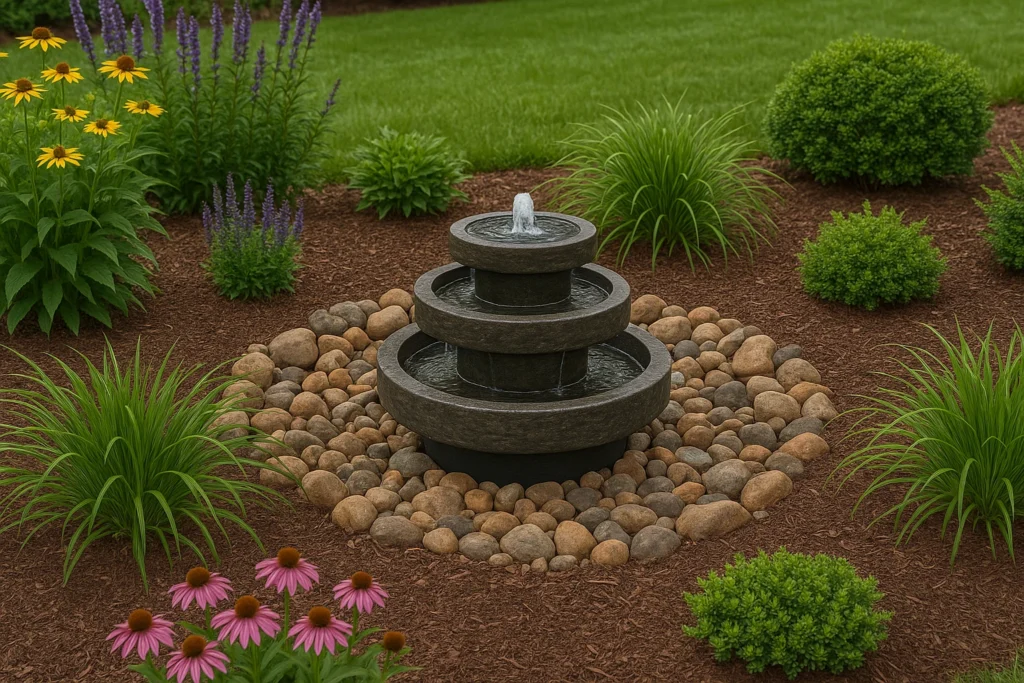
Streams and waterfalls sit at the higher end of the price range, and they usually need more landscaping work. Not to forget, the materials you choose also matter. Stone and concrete last longer but usually cost more up front.
Once your water feature is in place, you’ll need to maintain it. Monthly electricity for a pump might cost between $6 and $20. On top of that, you may end up needing algae treatments and top-ups, especially in hot weather. They will cost you another $6 to $20 a month.
But here’s an insider tip. Choosing a solar-powered pump is one of the best ways to save on electricity. Using collected rainwater helps you cut costs as well.
Don’t be sad if you’re working with a tight budget. It’s still possible for you to get a garden water feature and enjoy its benefits. A small birdbath or a tabletop fountain costs far less than larger installations, and DIY kits often cost half as much as a professional setup. You can always start small and expand later as your garden grows.
Incorporating Water Features: Common Mistakes to Avoid
A few mistakes can turn your precious garden water feature into one massive headache for you. Take Ken, for example. He had big plans for his backyard. He pictured birds splashing in a fountain, a peaceful pond in the corner, and maybe even a little stream running through it all. So he added everything at once.
But the space ended up feeling cramped. Nothing matched, and the maintenance cost quickly became high. The plants around the pond weakened, and algae took over by the end of summer. How sad!

To dodge something like this happening to you, what are the mistakes you need to avoid so that your garden water features stay wonderful? Let’s find out.
- Overcrowding the Garden: Adding excessive garden water features can make the garden feel congested. Instead of creating peace, it overwhelms the eye and makes maintenance harder than it needs to be. One or two are usually more than enough for most spaces.
- Poor Placement: It’s easy to put a water feature into an unused corner, but if it’s hidden or stuck in a busy area, no one would enjoy it. A water feature works best where people can see and hear it easily. The most ideal places for it are near a patio, beside a walking path, or in clear view from indoors.
- Neglecting Maintenance: Even the most beautiful design won’t last without regular care. You should clean the water every one to two weeks to prevent buildup and pump damage. If that sounds troublesome, you can hire a garden professional once a month to help keep things running smoothly.
- Ignoring Environmental Impact: Using too much water or chemical-heavy cleaners can damage the plants and wildlife around your garden. Try collecting rainwater for top-ups and stick to natural or garden-safe cleaning products whenever possible.
Bring Your Garden to Life with Water
The difference a water feature makes is huge. It changes your garden from quiet to calm and from nice to unforgettable. Also, it pulls the space together and adds a rhythm you can feel that makes everything just more alive.
We’ve looked at how to choose the right feature, where to place it, what it takes to maintain one, and how to stay within budget. But reading about garden water features is just the start. The real change happens when you hear the water drip for the first time or notice birds coming by for a drink. That’s when it feels real.
If you’re thinking it might be time to add that missing piece, we’re here to help. At Design Martus, we design, build, and maintain full garden landscapes. That includes water features shaped to suit your space and your style. No guesswork, no wasted time, just something beautiful that works.
Let’s build something that brings your garden to life. One sound, one ripple, one peaceful moment at a time!




